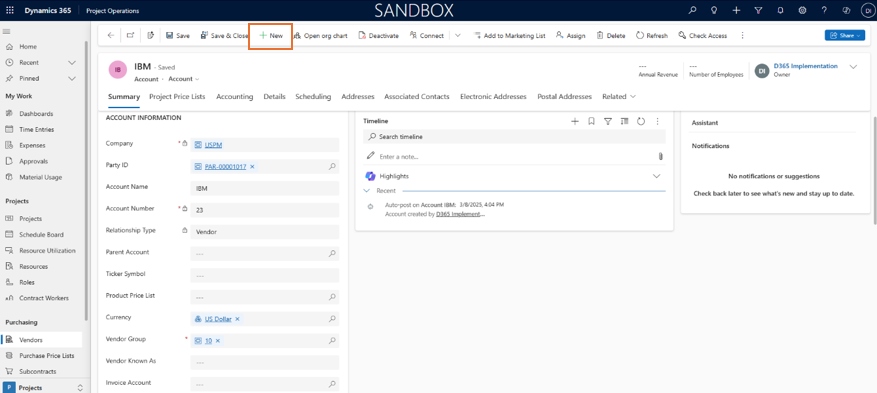Subcontract Management in Project Operations
- sribatsapatra1
- Mar 27
- 2 min read
Managing subcontracts is a crucial aspect of project-based organizations. Microsoft Dynamics 365 Project Operations provides a comprehensive process to handle subcontract management effectively. This blog delves into the end-to-end subcontract management process, applicable to resource/non-stocked based scenarios and Lite deployment from deal to proforma invoicing.

Important Note
Fixed Price subcontracts are currently not supported for resource/non-stocked based scenarios in Project Operations.
Understanding the Subcontracting Process Flow
The subcontracting process typically follows a structured business flow. Here’s a step-by-step breakdown:
1. Creating a Subcontract
The project manager initiates the process by creating a subcontract with a vendor. The price lists attached to the vendor record are used by default. It is essential that the vendor account has a relationship type of Vendor or Supplier.
2. Itemizing Purchases
Subcontract lines can include time, expenses, or products. The transaction class of each subcontract line determines its purpose. The project manager can itemize all purchases as line items on the subcontract.
3. Iterating Over the Subcontract
Both the vendor account manager and the project manager can iterate over the subcontract, adjusting pricing as needed in the purchase price lists attached to the subcontract.
4. Associating Vendor Contacts
For time-based subcontract lines, the vendor account manager associates vendor contacts with each line. This association provides valuable information to the project manager. The system automatically creates a bookable resource from the contact if one does not already exist.
5. Setting the Billing Method
Each subcontract line can be billed as Fixed Price or Time and Material. For fixed-price subcontract lines, a milestone-based invoice schedule is established.
6. Confirming the Subcontract
Once the negotiation is complete, the subcontract is confirmed. Confirmed subcontracts cannot be edited unless reopened for edits, which reverts the status to Draft.
7. Staffing Generic Team Members
Generic team members on a project can be associated with a subcontract line, indicating the need to staff them with subcontractor capacity.
8. Managing Named Team Members
Named team members can be created directly on a project or booked using resource scheduling experiences. If a named project team member is a contract worker, they can be associated with a subcontract line, drawing down available capacity.
9. Logging Time, Expenses, and Material Usage
Subcontractor resources can log time, expenses, and material usage on projects and tasks. Upon approval, these entries record project cost actuals based on the purchase price of the contract worker or their role.
10. Recording Vendor Invoices
Vendor invoices and line items can be recorded for work performed or products delivered. Each vendor invoice line must be specific to a project and transaction class (time, expense, product/material, milestone, fee). Optionally, they can reference a subcontract line.
11. Three-Way Match and Verification
The system automatically associates all cost actuals matching the subcontract line and project to the vendor invoice, facilitating a three-way match and verification process. The project manager reviews, removes, or adds project cost actuals and completes the verification.
12. Marking as Ready for Payment
Upon completing the verification process, the vendor invoice is marked as Ready for Payment. It can then be transferred to an Accounting or Payables system for payment processing. Previously recorded project costs are reversed, and actual costs from the vendor invoice line are recorded on the project.




Comments